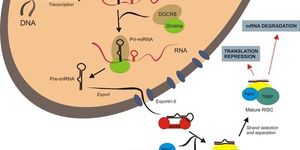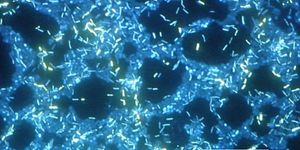Researchers at the UNC School of Medicine have found that the blood platelet protein Rasa3 is critical to the success of the common antiplatelet drug Plavix, which breaks up blood clots during heart attacks and other arterial diseases.
The discovery, published in the Journal of Clinical Investigation, details how Rasa3 is part of a cellular pathway crucial for platelet activity during clot formation. Understanding the protein's role could also prove vital in the development of new compounds aimed at altering platelet function.

"We believe these findings could lead to improved strategies for treatment following a heart attack and a better understanding of why people respond differently to antiplatelet drugs, such as aspirin and Plavix," says Wolfgang Bergmeier, PhD, professor of biochemistry and biophysics, member of the McAllister Heart Institute at UNC, and senior author of the paper.
The research, which was conducted in mice, may also open the door to developing antidotes to Plavix, which was the second-best selling drug in the world prior to its patent expiring in 2012. It's still prescribed under its generic name clopidogrel to millions of people with heart disease, peripheral vascular disease, and cerebrovascular disease. However, the drug's antiplatelet effect increases the risk of bleeding in patients and makes emergency surgery too risky because Plavix affects the ability of platelets to prevent blood loss after vascular injury. An antidote would bypass the need to wait until the kidneys eliminate the drug from circulation.
Since the 1970s, scientists knew that clopidogrel had an anticlotting effect on platelets. In 2001, they found the compound's target - a cell receptor called P2Y12. As Plavix was developed into a multibillion-dollar drug, scientists still didn't know how this receptor communicated with other proteins in the cell pathways important for platelet activation. This also meant they didn't know why people responded differently to the drug.
Researchers have since learned that the receptor P2Y12 communicates with a small protein called Rap1, which is like a cellular switch. In platelets, this switch is typically off, which keeps platelets in a non-sticky state.
In this quiet state, the 2.5 trillion platelets can patrol blood vessels and arteries without sticking to the endothelium - or inside wall - of, say, a coronary artery. If there's a problem in the endothelium, the Rap1 switch is flipped and platelets morph into super sticky cells that clot fast to keep blood from gushing into tissue.
This is crucial when we have a severe injury or even a cut.
But this clotting also happens during a heart attack, when a massive clot is the last thing a person with heart disease needs.
To counteract the effects of the clot, Plavix hits its P2Y12 target to flip the Rap1 switch back to the off position so the platelets return to their quiet, nonsticky state. Aspirin also helps keep platelets from sticking.
Until now, no one knew how hitting the P2Y12 receptor triggered the Rap1 protein to switch off. The experiments conducted by the Bergmeier lab show that the Rasa3 protein is a crucial player in this process.
"Platelets live in unique environment and they need to be very sensitive to changes in that environment," Bergmeier says. "They are ready to jump into action almost without anything happening. You could say they're in a preloaded state. But for that to be possible, they need a breaking system that keeps the platelets in the off state so that they don't do anything until they absolutely have to."
Rasa3 is a key part of that breaking system, and Plavix makes sure that the break stays on.
"We have good reason to believe that the Rap1 switch, controlled by the same GEF and GAP proteins, also regulates the active state of human platelets," Bergmeier says. "We expect this research will provide critical information for improving antiplatelet therapies, possibly including approaches that eliminate some of the patient-to-patient variability and the increased bleeding risk associated with current antiplatelet drugs."
[Source: UNC School of Medicine]









